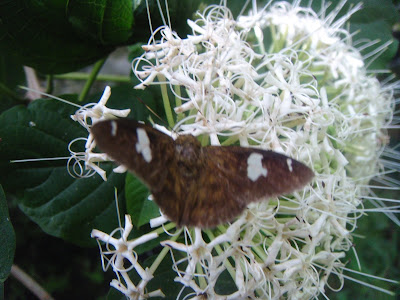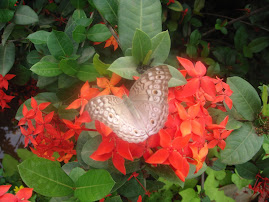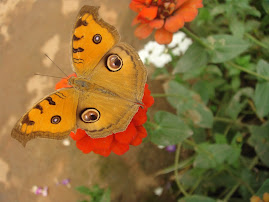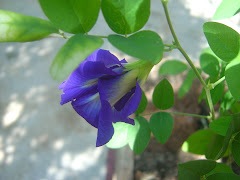
Although the Musical Notes have been blooming profusely since
June, I have never noticed any pollinator being active here! Or
else I'd surely have caught a winged admirer against that
pristine white backdrop.


But the other day I was in for a pleasant surprise. The familiar
loud, almost angry buzzing, was music to my ears! After a gap of
two months (I last saw them here in May), the blue-banded bees
were back!!!
From March to May they were active in my garden. The loud buzzing
and that striking metallic blue made sure you didn't ignore them!
I wonder if it was because certain plants were trimmed and re-
arranged that disturbed them in some way. But I'm so glad to see
them again!

Although I've tried taking several shots in the past, I've never
managed a clear shot. This is because they fly very fast and even
if they hover near flowers, they're never still! The above photo
was taken in May and the one below, in March. I found one hovering
near the Coleus. You'll need to look hard to locate it!!

I looked up several sites and here's what I found.
The Blue-banded bees are native to Australia although their close
relations can be found throughout the Asia-Pacific region. They
are members of the genus
Amegilla. They are all small to medium
(7 to 15mm average) with conspicuous pale-blue or bright-blue
bands on a mainly black abdomen. Males have five bands and
females, four.
Blue-banded bees are buzz pollinators. They use a special technique
to get pollen from flowers. They hold on to the flower and vibrate
with a loud buzzing sound. The vibration causes the flower to drop
the pollen on the bees' bodies. Although the blue-banded bees are
attracted to blue and purple flowers, they visit blooms of other
colours too. They are not aggressive and will sting only if
threatened.

The female bees build nests in shallow burrows in the ground or
in the soft mortar of houses. Males cluster at night by clinging
to twigs or stems. At rest, the blue looks very pale. I did find
them once at dusk (in April) clinging to a stem, and with their
wings closed.It's only when they fly that the deep blue can be
seen.
And now that they are back again, that's one blue that won't get
me down!































































































.jpg)
































